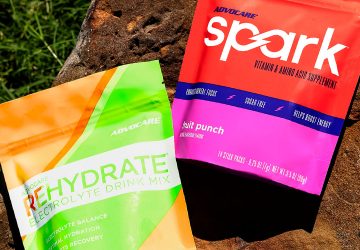You’ve been on a fitness journey for several months (or years) now, and you seem to be doing all the right things. You spend endless hours at the gym each week and you seamlessly adhere to a “healthy” diet. And yet, it seems as if you have plateaued on your mission to attain your fitness goals. Frustration sets in as you mull over where you have gone.
Most of us are aware of how our diets affect our body composition exceedingly more than genetics and exercise, which is even more befuddling given that you follow a balanced diet—or so it seems. Tweet This! But the truth is, not all healthy foods are as innocent as they seem. There are several foods masquerading themselves as health foods but can be deceptively sabotaging your diet. Tweet This!
1) Yogurt.
Yogurt has been touted as a low-calorie food suitable for those who have a need to manage their weight. Used as an ideal replacement for breakfast or a healthy option for a post-workout snack, yogurt contains beneficial probiotics which aid in maintaining healthy gut flora, a good source of protein to keep you satiated and promote the building and repair of muscle mass. Unfortunately, many options contain an overwhelming amount of sugar and saturated fat which can have the opposite effect you desire on your waistline.
Although yogurt naturally contains sugar from lactose (sugar found in milk) additional sugar is added to improve flavor. Tweet This! Not to mention, certain companies offer fruit-on-the-bottom or sugary granola toppings along with the packaging. Select options containing around 10 grams of sugar or less per serving with a high source of protein (12g or more). If adding texture is a must, use fresh berries, nuts or seeds in place of pre-packaged toppings.
2) Fruit Juices.
Many fruit juices, especially fortified juices are a great alternative to common sugar-laden drinks like sodas. Fruit juices contain nutrients like vitamins, minerals, bioactive compounds and even fiber (in juices with pulp). However, the natural sugar content combined with added sugars can amount to the same sugar content found in soda. 100 percent juices contain only natural sugars, but the body cannot distinguish biochemically between natural and added sugars. One cup of unsweetened apple juice contains about 24 g of sugar! Instead of grabbing a container of juice, choose for a piece of whole fruit. If you must have a glass, choose 100% juices with no added sugars, juices which contain pulp, or opt for grapefruit (17 g of sugar) or watermelon juice (12 g of sugar). Tweet This!
3) Salads.
Salad…the pinnacle of health foods. Eating a salad is one of the most convenient and simplest ways to incorporate the recommended servings of fruits and vegetables your body needs to receive core nutrients for proper function. There are quite a few benefits you can reap from selecting a salad as a meal. Tweet This!
Salads provide a colorful high-fiber, low calorie meal loaded with an array of phytonutrients. However, there is a fine line between a nutritious salad and an accumulation of unhealthy ingredients loaded with empty calories. Calories from common toppings like cheese, croutons, fried wonton noodles, dried fruit, candied nuts or “crispy” protein in vast amounts can pack on several hundred calories in your “low-calorie” meal.
Did you know the addition of many salad dressing options can send your total calorie count above 1,000? Follow these principles below to help keep your salads healthy and fit. Tweet This!
- Opt for low-fat or low-calorie vinaigrette based dressings instead of creamy options. Always order salad dressings on the side to control portions (1 tbsp). Another option is to replace dressings with extra virgin olive oil, salsa or guacamole. Tweet This!
- Select grilled proteins in lieu of crispy proteins.
- Avoid croutons, fried wonton noodles and cheese.
- Choose fresh berries instead of dried fruit.
- Go easy on the cheese.
4) Nuts and granola.
There is a great deal of research which suggests eating nuts may be good for your heart. Tweet This! Nuts contains a host of antioxidants like vitamins A, C, E and selenium, protein, omega-3 fatty acids, fiber, unsaturated fats, and host of essential minerals. Incorporating a serving of nuts into your diet may help lower your cholesterol, specifically the low-density lipoprotein (“bad” cholesterol) and offer a protective benefit for certain heart ailments.
However, two words should come to mind when you grab a handful of nuts for a snack – portion control. Tweet This!As a suitable substitute for saturated fats, nuts are still very high in calories. A one-ounce portion of fat contains anywhere from 69 calories (chestnuts) to 204 calories (macadamia nuts). Almonds, pecans, and peanuts contain a whopping 170, 201 and 166 calories in each serving, respectively. A portion-controlled snack filled with unsalted nuts no more than four times a week can help keep your waistline intact. Tweet This!
Speaking of nuts, granola, often made with a variety of nuts along with oats and dried seeds, carries a host of nutrients like fiber, proteins and healthy fats. This healthy snack however can be deceptively sabotaging your diet. How many times have you picked up a package of granola or granola bars and been enticed by the delicious chocolate chips and delectable fruit along with the ultra-calorie dense honey, brown rice syrup or evaporated cane juice — “aka” sugar? It may be quite challenging to find a lower calorie option but fret not. You can make a healthier alternative at home. Try this homemade granola recipe for a healthy and satisfying snack.
5) Smoothies.
When you are on the go, smoothies are a quick and efficient way to achieve your five-a-day fruit and vegetable target. But, not all smoothies are created equal. Tweet This!When executed well, a smoothie can become a low–calorie, packed with a myriad of phytonutrients, vitamins and minerals. And with an endless option for variations of recipes, smoothies can provide a healthy serving of protein and fats.
Unfortunately, commercially prepared smoothies sold in restaurants are often sugar-laden and calorie dense which reduces the benefits of nutrients added. Even homemade smoothies can quickly turn into an unbalanced meal. Check out these tips below for a healthier option:
- Add one serving of low-fat milk or milk alternative in lieu of fruit juice, for your liquid base
- Add 1-2 servings of dark-leafy greens for essential vitamins, minerals, phytonutrients, and fiber (spinach, kale, chard, etc.)
- Use no more than 2 servings of fresh or frozen fruit.
- Add a serving of protein or healthy fat (protein powder, nuts, plain greek yogurt, silken tofu, chia seeds or avocado).
6) Sugars and alternative sweeteners.
You may have noticed certain sweeteners pop up on cocktail menus or heard a few popular health influencers endorse “healthy” sweeteners like brown sugar, agave nectar, turbinado or raw sugar, and honey as “healthy,” while vilifying table sugar as unhealthy and toxic.
But, here’s the truth: everything can be “toxic” and unhealthy in larger amounts, including these so-called healthy sweeteners. Moderation is key. Tweet This!Though some of these sugar substitutes may have a lesser impact on blood sugar (agave nectar) when compared to table sugar, many of these options carry a greater amount of carbohydrates, which means they contain more calories than refined sugar.
For instance, one tablespoon of honey contains 64 calories while one tablespoon of refined sugar contains 48 calories. Agave nectar is also more calorie-dense with 60 calories per tablespoon. Brown sugar, even in its raw form is not necessarily a healthier alternative to refined sugar. It does contain more minerals due to the presence of molasses, but not enough to present any real benefit to your health. One would have to consume an immense amount of brown sugar to receive the amounts of potassium or iron the ingredient provides, which you can receive easily by eating a serving of fruit or vegetables, minus the heart disease, type 2 diabetes and dental caries. So, no matter the type of sugar or sweetener you choose to incorporate in your diet or happy hour cocktail, please do so in moderation. Tweet This!
The American Heart Association recommends reducing the intake of added sugars to less than 10 percent of your total energy intake. This means if your total caloric intake for the day is 1500 calories, no more than 150 of your calories (37.5g or nine teaspoons) should come from added sugar (37.5g sugars).
References
mayoclinic.org/diseases-conditions/diabetes/in-depth/diabetes-nutrition/art-20047654
mayoclinic.org/diseases-conditions/heart-disease/in-depth/nuts/art-20046635





